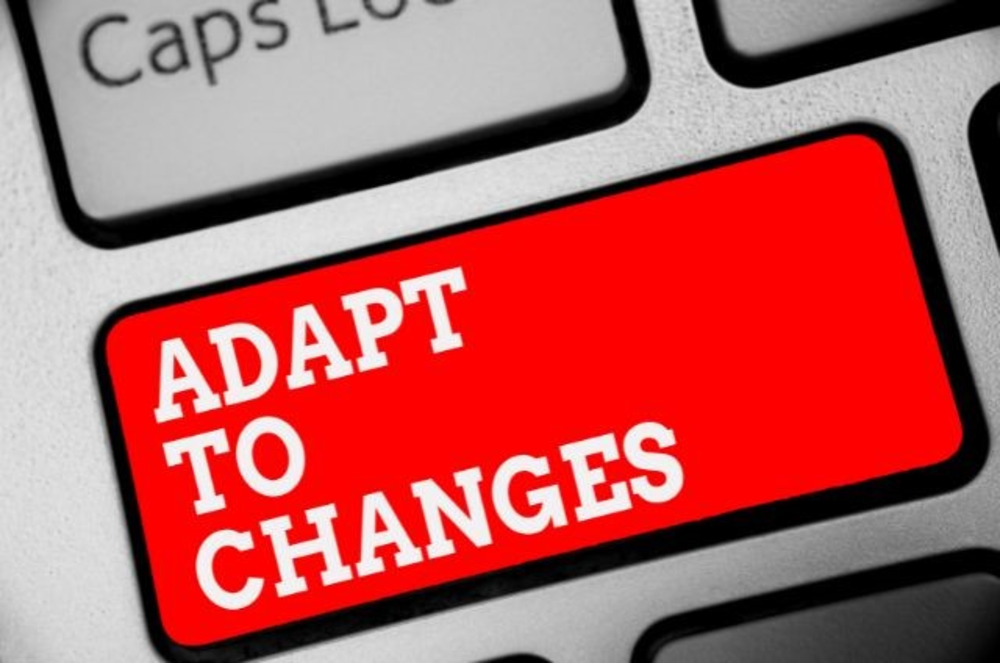Joining a gym is a big step for anyone, especially if it’s their first time. That’s why it is your duty to give them the best possible experience so that they don’t quit halfway and actually enjoy coming to the gym.
This is where onboarding comes into play. An effective onboarding process is more than just a friendly hello; it’s about making new members feel like they belong and are supported.
In this article, we’ll look at powerful onboarding strategies that you can use to turn your new members into long-time veterans of your gym. Let’s begin.
Why is Gym Onboarding Important?
Gym onboarding is a member onboarding process that happens after a new member signs up for a gym.
It is important to make clients feel at home from the get-go, to secure long-term members who love your gym.
It Can Improve Retention Rates

A well-executed onboarding process significantly increases the likelihood of members staying with your gym. It’s like a friendly welcome that makes them think, ‘This is my place.’
In fact, an in-depth study done by IHRSA on member retention in North America found that a thorough onboarding process can have a dramatic effect: 87% of members onboarded correctly remained active after 6 months.
This highlights that when new members feel they belong and understand how everything works, they’re more likely to stay members for a long time, reaping the full range of member benefits.
1. Will Help You Build a Strong, Loyal Group

If someone has a bad start, there’s a big chance they’ll look for another gym. Research shows that 86% of customers will leave a brand after having two bad experiences.
Most people listen to their friends and family more than ads. So, if one person loves your gym, they’ll tell others.
A survey done by Nielsen showed that 88% of consumers trusted recommendations from people they know, above all other forms of marketing messaging.
If you don’t pay attention to what your members are unhappy about, they might leave.
So, making sure everyone’s first experience is awesome can really help your gym’s reputation and boost member engagement.
2. Gym Onboarding Makes Things Easier for Everyone

A smooth start at your gym means less work later.
If you use fitness software to keep track of who’s who and what classes they’re in, you’ll make fewer mistakes.
And if you put all the important stuff online, like how to sign up for classes or what the gym rules are, you won’t have to keep repeating yourself.
This makes life easier for both your staff and your members.
3. Gym Onboarding Builds Trust Right Away

When new members see that you’re putting effort into helping them from day one, they start to trust you. This trust is a big deal.
It means they’re more likely to stick to their fitness plans and feel good about being part of your gym.
A good onboarding process shows them that you care and that you’re there to support them on their fitness journey.
Effective Gym Onboarding Strategies
Now that you why onboarding is important. Let’s talk about some simple but powerful ways strategies to implement a perfect onboarding for a new member:
1. Create a Warm Welcome for New Members

When a new member joins your gym, the first thing you should do is set up a personal meeting with them.
This meeting is a great opportunity for you to make them feel welcome and comfortable.
Encourage them to come dressed for a workout and to bring a questionnaire that they’ve filled out beforehand.
This questionnaire should include questions about what they want to achieve at the gym, their previous exercise experience, and their eating habits.
The goal of this meeting is to create a relaxed atmosphere where the new member feels at ease. It’s important to get to know them during this time.
Ask about their background and listen carefully. Make sure to take notes about important things like their name, what they want to achieve at the gym, and any special needs or preferences they might have.
2. Customize their Fitness Journey

During this initial meeting, your focus should be on what they want to achieve.
If they mention a specific goal, like wanting to lose weight, ask them why this goal is important to them.
Understanding the reason behind their goal helps you grasp what motivates them.
This is also the time to do a simple fitness test. This test isn’t anything too complicated; it’s just to see where they are in terms of fitness.
You’ll want to check things like how well their heart and lungs work (cardio), how strong they are (strength), and how well they can move and bend (flexibility).
It’s also a good idea to measure their body fat percentage. After the fitness test, talk to them about nutrition.
Offer them straightforward advice and a simple guide that they can follow to eat healthier.
3. Showcase Your Gym’s Best Features

Even if they’ve already seen the gym, this tour should be more in-depth. Explain what each area of the gym is for and how they can use it.
During the tour, try to introduce them to established members who already work out at the gym and are friendly.
This can help the new member feel more connected and less like an outsider. At the end of the tour, sit down with them to talk about staying motivated and setting goals.
Use the SMART goals method to help them set goals that are specific, measurable, achievable, relevant, and time-bound.
These goals should include what they want to achieve in the short term (like in a month), medium term (like in three months), and long term (like in a year).
To keep them excited about their gym journey, offer them a reward, like a voucher, if they meet certain workout targets in their first month.
This kind of incentive can motivate new members and make them look forward to coming to the gym.
4. Guide Them Through Their First Workout

Within a few days of that first meeting, you should have a workout plan ready that’s made just for them. This plan should be based on what you learned about their fitness goals and abilities.
It’s best if the same staff member who met with them the first time also helps them with this first workout. This helps create a sense of trust and makes the transition easier for the new member.
During this first workout, it’s key to explain each exercise clearly. Show them how to do each one and give them easy-to-remember tips or cues. For example, if they’re doing a squat, you might say, “Keep your back straight and push up from your heels.”
It’s also important to adjust your coaching style to what motivates them best. Some people might like lots of encouragement and energy, while others might prefer quiet, focused instructions.
After they finish their workout, have a chat with them. Ask them how confident they feel about doing these exercises on their own.
If they seem unsure, offer to guide them through a few more workouts. This extra help can make a big difference in how comfortable they feel in the gym.
5. Make Them Feel Like They Belong

Creating a welcoming community in your gym is important, especially for new members.
One of the best ways to do this is by encouraging them to join group fitness classes that match their fitness level.
When they’re in a class with others who are at a similar level, they’ll feel more comfortable and less intimidated.
Being part of a group also helps them make friends and feel like they’re part of the gym community.
This is important because when people feel connected and enjoy their classes, they’re more likely to keep coming to the gym regularly.
6. Stay Connected With Your New Members

Keeping in touch with new members is another important part of helping them settle into the gym, just as you would with an existing member.
Find out how they prefer to communicate, like through email, text messages, or instant messages.
Then, during their first month, send them messages regularly.
These messages can include congratulations on their progress, tips about training and eating right, and information that’s specifically helpful for their fitness level and goals.
7. Inform and Educate for Success

Educating new members is also a big part of helping them succeed, and your gym’s website, or membership site, is a great tool for this.
Make sure to post accurate and useful fitness content on your blog or social media. Encourage new members to follow these platforms regularly.
You can also send them a monthly newsletter that has articles and tips that match their interests and what they’re trying to achieve. Another great idea is to create video seminars on important fitness topics.
These videos can cover things like how to eat right, how to exercise safely, and how to stay motivated.
Encouraging new members to watch these videos can give them a lot of valuable knowledge that will help them reach their fitness goals.
8. Enhance and Adapt Your Onboarding Strategy

You also want to make sure that the whole process of joining and getting used to the gym keeps getting better.
To do this, it’s a good idea to regularly ask members, including board members, what they think about how they were welcomed and introduced to the gym.
This feedback can be really valuable. You can find out what new members like about the onboarding process and what could be better.
It’s also important to keep an eye on whether any new members stop coming to the gym.
If someone decides to leave, try to find out why. This can give you insights into what might not be working well in your onboarding process.
9. Sample Customer Onboarding Checklist
Here is an example of how an onboarding process should look like:
Before First Visit:
- Welcome Email: Send a welcome email with all the necessary information about the gym, operating hours, and any special instructions.
- Membership Card: If applicable, send the membership card or details on how to get it.
- Personal Trainer Introduction: If they’ve signed up for personal training, introduce them to their trainer.
First Visit:
- Gym Tour: Give them a tour of the gym, showing them where everything is located.
- Equipment Introduction: Show them how to use the equipment safely and effectively.
- Class Schedule: Provide them with a schedule of classes and encourage them to try one.
First Month:
- Check-In: After their first week, check in to see how they’re doing and if they have any questions or concerns.
- Personal Training Session: If they’ve signed up for personal training, ensure they’ve had their first session.
- Nutrition Consultation: If you offer a nutrition consultation, schedule their first appointment.
Ongoing:
- Regular Check-Ins: Regularly check in with them to see how they’re doing and if they need any assistance.
- Member Events: Invite them to member events to help them feel part of the community.
- Progress Tracking: Help them track their progress towards their fitness goals.
Best Digital Tools to Optimize Your Onboarding
Using the right digital tools can make a huge difference in how you welcome new members to your gym. These tools are designed to simplify processes, making everything more efficient and enjoyable for both you and your new gym members. Let’s explore some of the best tools out there.
1. Lead Management Tool
A lead management tool is like an organized digital assistant for your gym.
It’s software that helps you keep track of everyone who might be interested in joining your gym.
For example, if you meet someone interested in your gym – you can put their details in this tool, and it keeps everything neatly organized for you.
Benefits:
Organizing and Tracking Potential Members: This tool acts like a digital Rolodex, keeping all the information about potential members in one place. You can see their contact details when you last spoke to them, and notes about their fitness interests.
Enhancing Communication: This tool lets you send emails or messages directly to potential members. You can send them updates about gym events, membership deals, or just a friendly reminder that you’re there to help them get started.
Automated Reminders for Follow-Ups: One of the coolest things about this tool is that it reminds you to follow up with people. If someone shows interest in joining but hasn’t signed up yet, the tool will nudge you to reach out to them. This means you’re less likely to miss out on signing up a new member.
Learn more about the Lead Management Tool.
2. Online Subscribe/Webshop
This is your gym’s online storefront. It’s a website where people can sign up for memberships, buy workout plans, or even shop for gym gear and supplements.
It’s like having a 24/7 open front desk and store for your gym, accessible from anywhere.
Benefits:
Convenience for Potential Members: People can sign up to become members of your gym at any time, from the comfort of their home or on the go, and immediately start enjoying the membership benefits. They don’t need to wait for your gym to open or stand in line to get a membership.
Reducing Administrative Workload: This tool is a big time-saver for you and your staff. It handles sign-ups, payments, and even inventory for products you sell. This means less paperwork and more time focusing on your gym members.
Immediate Access to Gym Resources: As soon as someone signs up or buys something, they can start using what they bought right away. If they sign up for a membership, they can start booking classes immediately. If they buy a workout plan or gym gear, they can start using them without delay.
Check out the Online Webshop Tool
3. Questionnaire/Intake Software
This software lets you create digital questionnaires for new members.
It’s a way to gather important information about them, like their fitness goals, health history, and workout preferences.
This helps you understand what they need and want from their gym experience.
Benefits:
Gathering Relevant Information: When new members fill out these questionnaires, they provide valuable insights into what they’re looking for in a gym. You can learn about their fitness level if they have any health concerns, and what kind of workouts they enjoy.
Tailored Workout and Diet Plans: With this information, you can create personalized workout and diet plans for each member. This means they get a plan that’s designed just for them, which can help them see better results and feel more satisfied with their gym experience.
Enhancing Member Satisfaction: When members see that you’re taking their individual needs and preferences into account right from the start, they’re more likely to feel valued and happy with their choice to join your gym.
Learn more about the Questionnaire/Intake tool
Conclusion
When a new person joins a gym, it’s really important to make them feel welcome and help them get started on the right foot.
Good onboarding strategies include understanding what new members need, keeping in touch with them often, helping them set goals that make sense for them and always looking for ways to make the process better.
By doing these things, you have a good chance of keeping your gym members happy and coming back, and these members might even recommend your gym to their family and friends.
This not only makes the gym a nicer place for everyone but also helps members reach their fitness goals.




